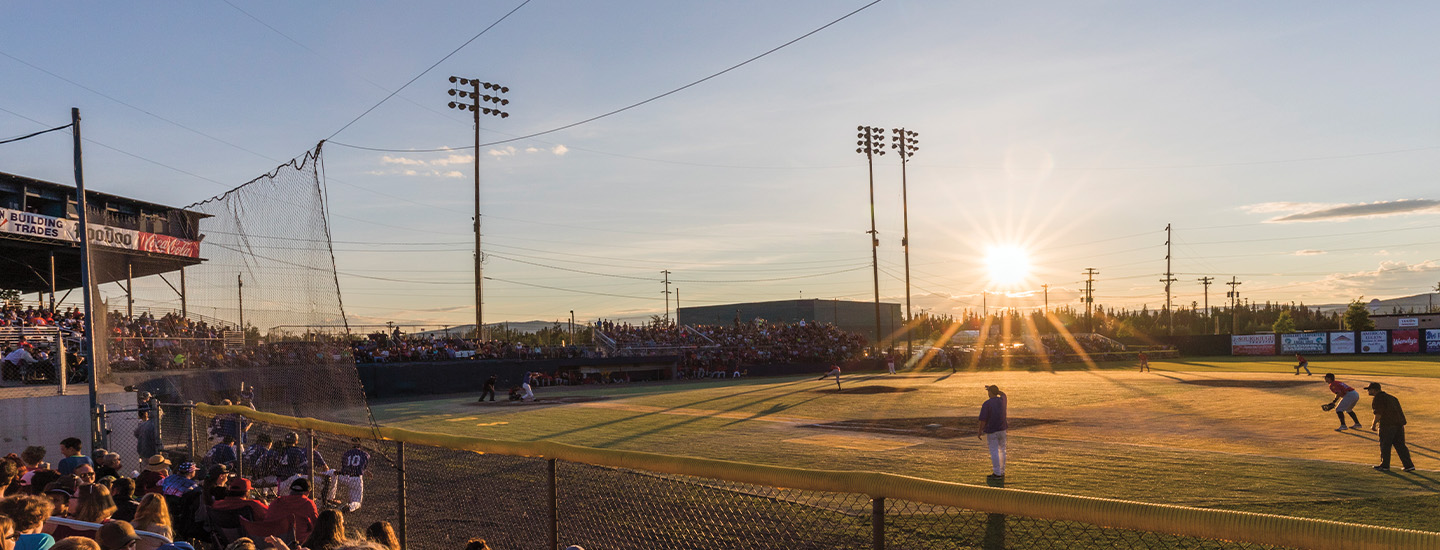Take a walk down the street in Fairbanks, Alaska, on June 21. There’s Mr. Freeman, mowing his lawn. The Wells family is having a barbecue. Dogs bark and kids play in backyards.
Now head downtown for a street festival. You can grab a hot dog and hear some live music. Soon the big baseball game will begin. The sun is just starting to set as you wipe some sweat from your forehead.
This might sound like a typical summer day, but then you check the time.
It’s . . . 11 p.m.?
Welcome to the land of the midnight sun.
Take a walk through Fairbanks, Alaska, on June 21. A man is mowing his lawn. A family is having a barbecue. Dogs bark. Kids play.
Go to the street festival. You can grab a hot dog. You can hear live music. Soon the big baseball game will start. The sun is starting to set. You wipe some sweat from your forehead.
This might sound like any old summer day. But check the time.
It’s . . . 11 p.m.?
Welcome to the land of the midnight sun.
Walk down the street in Fairbanks, Alaska, on June 21. You’ll see Mr. Freeman mowing his lawn and the Wells family having a barbecue. Dogs bark excitedly, and children play in their backyards.
At the street festival downtown, you can grab a hot dog and hear some live music. Soon the big baseball game will start. The sun is just starting to set as you wipe some sweat from your forehead.
This might sound like an ordinary summer day, but then you check the time.
It’s . . . 11 p.m.?
Welcome to the land of the midnight sun.

